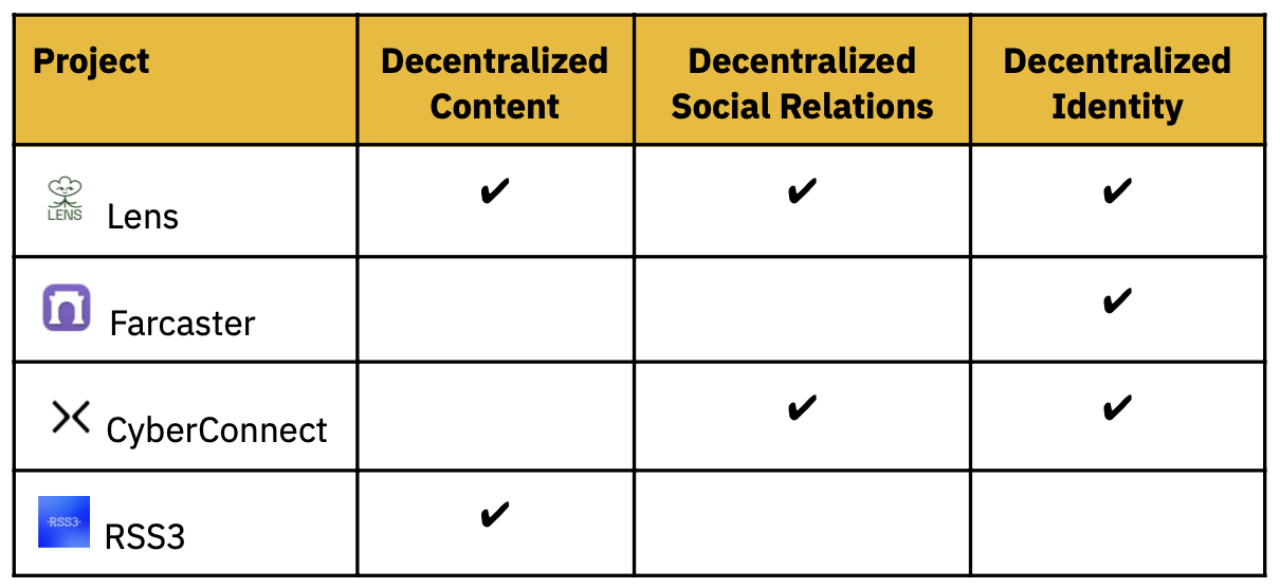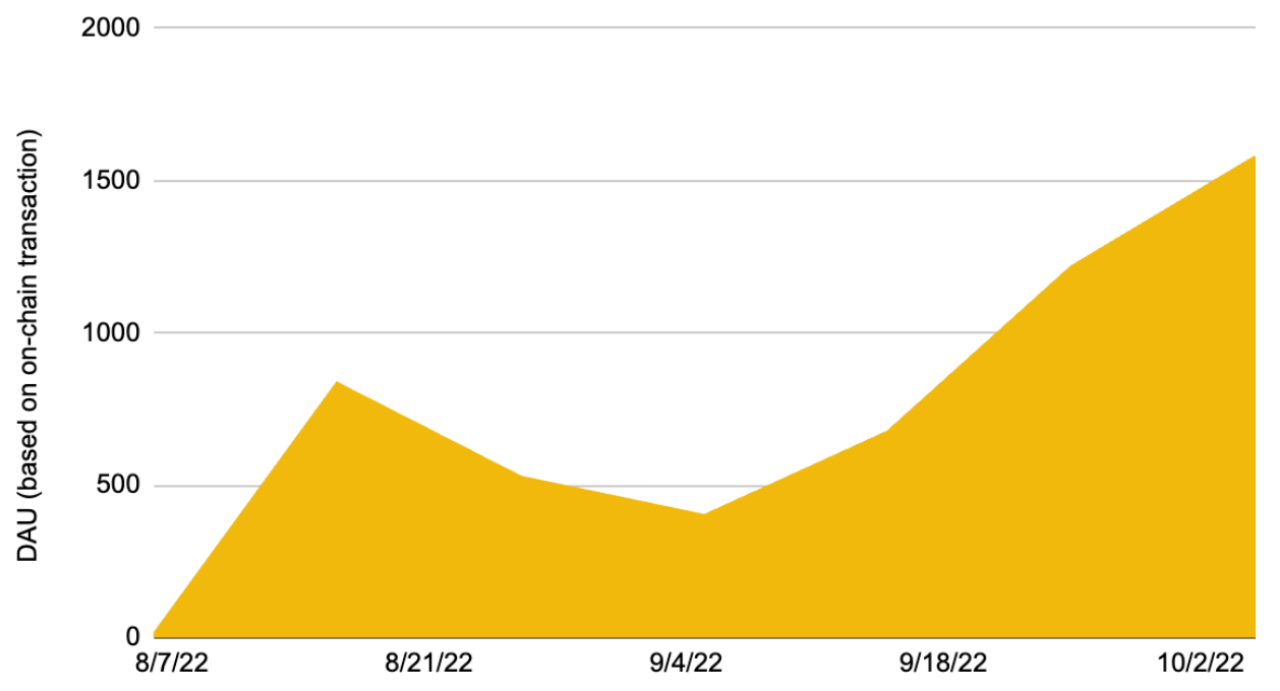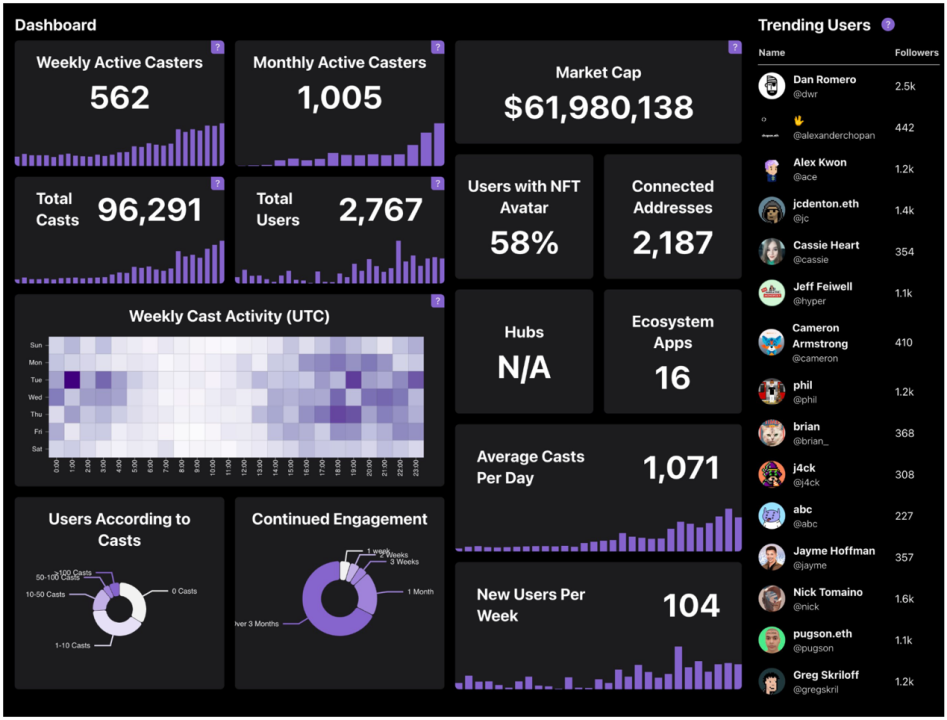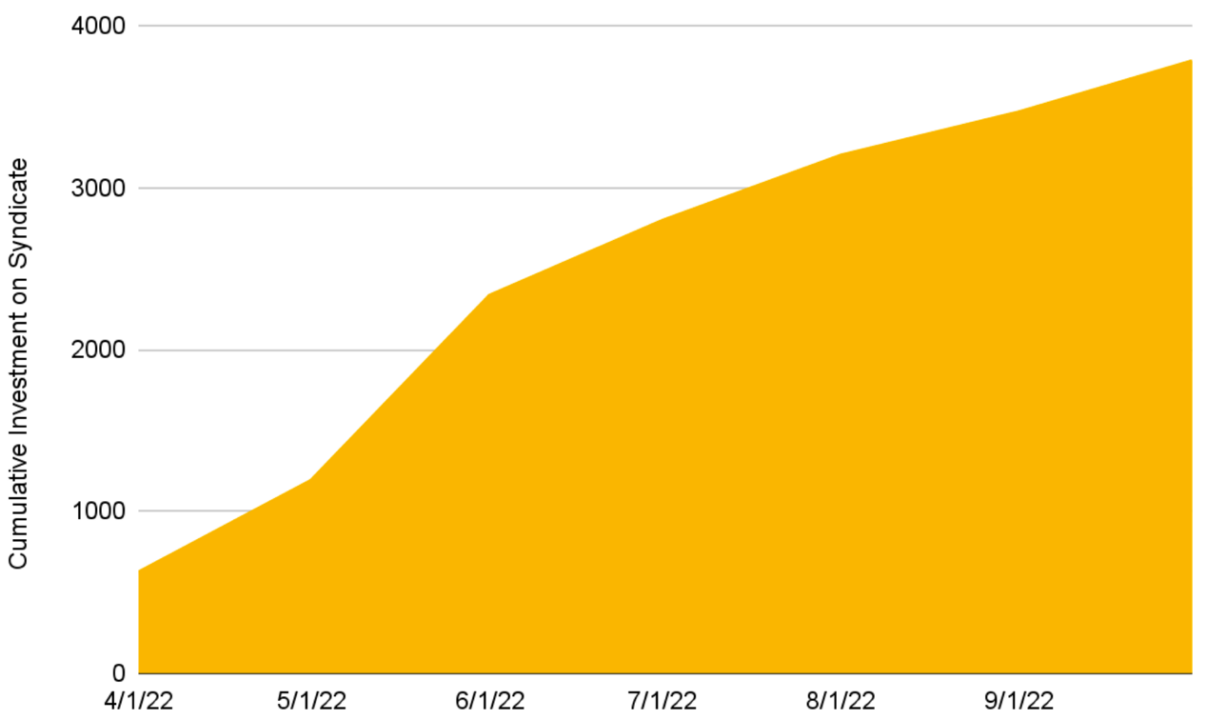Binance Research: Web3 Social on the Road to Mass Adoption
Original title: "Web3 Social: Road to Mass Adoption》
Original title: "
Original Compilation: Lynn, MarsBit
key points
key points
At its core, Web3 Social offers three main distinct benefits compared to Web2:
First, asset creation and shared ownership. Web3 social applications can use blockchain to create a shared ownership structure with their users.
Second, open data and identity: the data and credentials accumulated on the chain are shared throughout the ecosystem.
Third, a composable ecosystem: dApps built on smart contract blockchains such as Ethereum are composable in nature, allowing developers to build on top of existing applications in a permissionless manner.
The Web3 social ecology can be divided into the following parts: infrastructure, middleware, applications and tools.
Infrastructure: The project is trying to provide customized infrastructure to meet the needs of social applications.
Middleware: Most of the latest innovations in Web3 build on existing ecosystems, middleware protocols build on this existing infrastructure, and aim to become blockchain and Intermediary between applications.
Application: Web3 social application is a diverse product portfolio suitable for different scenarios. Prominent formats include social media, community-based applications and instant messaging products.
Tools: Unlike applications, tools are a set of products that take advantage of Web3 interoperability by designing their products to be "portable" across different platforms and blockchains.
Currently, Web3 social cannot directly compete with Web2 social in terms of user experience, and to be successful, it needs to offer unique and innovative utility. We are monitoring innovations in the following areas:
Mobile Apps: A large part of social activity happens on the mobile side, and we look forward to more innovations on this platform.
Connection with Web3 scenarios: Successful Web3 products can also come from solving Web3 native scenarios, such as on-chain community management.
introduction
introduction
Today, more than 4.65 billion people worldwide use social media, equivalent to 58.7% of the total global population. Web2 social media companies provide people with a way to easily connect with friends and family and allow people to access a large user base, which is making their profits staggering. For example, Meta, the global leader in social media, has a user base of nearly 30 billion, with a net income of $39.3 billion in 2021 and a net profit margin of approximately 33.38%.
However, Web2 social media platforms have several disadvantages:
Unfair profit distribution Users are the main group of content creators on social media, but the value they create is not rewarded. By controlling distribution algorithms and attention flow, platforms are able to monetize user-generated content without sharing it with users.
Forgotten data and identities Once users have established their social connections in one application, it is costly for them to switch to another. Therefore, new innovations in this field are naturally suppressed, and users also face fragmentation of identity and experience in different applications.
Closed Ecosystems The major Web2 platforms all benefited from a vibrant developer ecosystem in their early days, but once they gained enough traction, they closed the ecosystem to prevent others from stealing their data and users. A monumental event in the development of social media is the shutdown of Twitter's developer API because of concerns about data sharing.
Using blockchain technology, Web3 social applications have the following three value propositions to solve the above problems:
Asset Creation and Ownership Instead of relying on indirect monetization (i.e. advertising), Web3 social applications can use the blockchain to create shared ownership structures with their users. This can be achieved by issuing fungible tokens or non-fungible tokens (“NFTs”) to foster a sense of community and/or ownership.
Open Data and Identity Public and private key pairs are not only a way to secure assets, but also create a sovereign, consistent identifier across different platforms. Data and credentials accumulated on-chain are naturally interoperable with every application built on top of the blockchain.
infrastructure
infrastructure
middleware
middleware
application
We analyze these sectors with some salient items in the remainder of the report.
infrastructure
infrastructure
DeSo
Most Web3 social applications are built on a public first layer (“L1”) like Ethereum, but there are some notable attempts to provide custom infrastructure to meet the needs of social applications. Compared with other dApps, social applications require faster transaction speeds and greater bandwidth, as well as cheaper media storage, which may be difficult to achieve on a general-purpose L1. As such, there are some social-only L1s that stand out for their high transaction speed and cost-effectiveness of on-chain storage. However, decentralization is sacrificed to some extent.
DeSo is an L1 blockchain built for social media platforms with the vision to deliver all three of Web3's social value propositions simultaneously. DeSo claims that with its own version of Proof-of-Stake, it will eventually be able to achieve over 1,000 TPS (transactions per second) and accommodate up to about 30 million users. With built-in NFT and social token capabilities, users can easily create and monetize token-based communities, and the blockchain itself becomes a shared data ledger and composable developer platform.
Crossbell
However, building a custom L1 is a double-edged sword. While it allows for fast transactions and low content storage costs, it loses valuable connections to existing dApp and identity ecosystems on chains like Ethereum. Since the launch of the token in June 2021, there have been no widely popular consumer applications based on the DeSo ecosystem.
Crossbell is a new social L1 developed by the team behind RSS3. Compared to DeSo, it takes a different approach in that it focuses on providing a shared content storage platform. As an Ethereum sidechain, Crossbell is currently free to use and has built a content feed and user profile system.
Vision — Joshua Meteora, founder of RSS3 and Crossbell, believes that the core ethos of Web3 is decentralization, which should not be sacrificed for user experience. The customized L1 removes the efficiency limitations of existing blockchains and provides a better user experience with a sufficiently decentralized technology stack. Additionally, the interoperability between Crossbell and the Ethereum ecosystem enables it to benefit from rich content and identity systems, and the sidechain architecture allows for efficient execution and cheap storage.
middleware
middleware
Middleware is a protocol built using existing infrastructure to act as an intermediary between blockchains and applications by querying, organizing, and presenting data to application developers.

Lens Protocol
We will introduce four well-known social middleware protocols in this section. While they both aim to build a better system of social applications, they each take different approaches. The table above captures the differences in their technical architectures.
Developed by the team behind Aave (the largest lending platform on Ethereum), Lens Protocol is one of the most well-known social protocols. Similar to DeSo, all content, interactions, and user profiles are stored on-chain, but Lens is built on Polygon and therefore, able to interact with the existing Ethereum ecosystem. It has the following characteristics:
Unforgeable nature — user profiles, posts, and even followed people are all represented as NFTs.
The first benefit is effective monetization: a social media influencer can sell her posts or her entire profile with a single click.
Additionally, because the NFT standard is interoperable and accepted by numerous marketplaces and applications, relationships and content on Lens can be easily accessed and displayed on other platforms without additional technical integration.
Currently, there are more than 50 applications built on the Lens Protocol, with approximately 60,000 Lens handle holders.

image description
Figure 1: Daily active users of Lens from August to October 2022
Farcaster
However, this on-chain architecture also requires frequent wallet signatures, disrupting the user experience. Currently, the amount of content and social relationships on Lens Protocol cannot be compared with Web2 social media. According to on-chain analysis, in the past few months, the number of daily active users of the Lens ecosystem has reached several thousand.
If Lens took a technology-first approach, Farcaster took a user-experience-first approach. While everything built on Lens, including user identities, content, and social relationships is on-chain, in the Farcaster ecosystem, content and social relationships are stored on centralized servers (or "hubs"), so users don't need to worry about Pay the gas fee, or sign a signature.
So how does an application on Farcaster differ from a Web2 application? Farcaster gives each user a sovereign, on-chain identity. Based on the principle of full decentralization, even if a centralized server operator wants to block a specific user, others can still find and contact this person through their on-chain identity, and Farcaster will provide these users with a template for self-hosted Hub.
CyberConnect
The main app on Farcaster is the Farcaster App, a Twitter-like app with cryptocurrency-native features like on-chain activity tracking, NFT profiles, NFT post-collection, and more. In order to maintain a good community atmosphere, the Farcaster team strictly controls the flow of users. There are currently several hundred active users. It will be interesting to see if the community and user experience can be maintained as the ecosystem expands.
As a social graph protocol, CyberConnect aims to provide a one-stop data solution for developers of Web3 social applications. Whereas Web2 social media platforms store all social relationships on their servers, CyberConnect aims to be a common database for different applications, enabling greater interoperability between applications. For example, a user transitioning from app A to app B will find their friends, followers, and other synced social data seamlessly carried over to the new app along with their ID. CyberConnect is also incubating its own consumer applications. It recently released link 3, a Web3 version of Linktree with event planning capabilities.
RSS3
Currently, CyberConnect has an ecosystem of more than 70 projects, not only social media applications, but also DID, communication protocols, and community management applications. According to the latest update, the total number of registered users with CyberConnect identities is 1.49 million and the number of API calls is 22.22 million.
Currently, RSS3's main product is its data API, which queries all content-related data on Web3 and returns it to developers. The number of monthly requests has exceeded 200 million. On the client side, RSS3 also built a search engine and subscription service for users to subscribe to content-related updates, such as mirror articles, or posts on other decentralized social media platforms.
in conclusion
in conclusion
Based on size and valuation, social middleware is one of the most influential projects in the Web3 social space. The reason is simple: it is probably the industry sector with the most network effects. Without siled social data to lock users in, apps must constantly compete for user attention, and the protocol, as a tool for developers, has higher migration costs.
However, the protocol itself is useless without applications. For example, projects like CyberConnect and RSS3 have a lot of API calls, but they haven't been able to turn that developer activity into consumer adoption. Therefore, all of the above protocols are actively cultivating application ecosystems, and most of them are building applications themselves. In the next section, we'll explore Web3 social applications that have been built.
application
The preceding chapters shed light on projects that take an infrastructure-first approach. In this section, we explore projects that have taken a product-first approach. A fundamental thesis of these product-first protocols is that social behaviors are closely related to their respective scenarios, which requires a front end to explore product-market fit, rather than just building infrastructure in the dark. Ideally, iterations of the product will inform the design specifications of its social protocol so that other developers can start building more dApps on top of it, eventually forming an ecosystem.
An interesting observation is that many middleware projects are building their own native social applications. Farcaster, a project discussed in the previous section, also iterates on its protocol and Twitter-like social media applications. Most of Farcaster's features are not built at the protocol level, which allows Farcaster to better understand user preferences through experimentation and improve features at a faster rate. A functioning product also helps bootstrap first adopters, as well as demonstrate the capabilities of the underlying protocol to potential outside developers. The Farcaster app is currently in invite-only beta mode.

image description
Figure 2: Sample Dashboard from Farcaster
Early productization may have the potential risk of a lack of generality in the protocol. The user logic behind every major social app is different given its target audience and use cases. ** If the ultimate vision is to develop a protocol-based ecosystem, there is an inherent dilemma between more flexibility on the middleware side and more specificity on the product side. ** It is important to distinguish between ecosystems of standalone products and ecosystems of other add-ons.
The Web3 technology stack introduces a whole new implementation of trust and verifiability, which may enable the transition of social profiles from mere presentation to actual proof of a person's identity. This field is still nascent, but we look forward to more emerging innovations that add solid value to users. In addition to Farcaster, we identified several other projects based on research and publicly available information:
Context A platform to watch the wallets of friends, influencers, DAOs and celebrities.
Lenster is a permissionless social media networking app built using the Lens Protocol.
Light's browser for curating and discovering social interactions across NFTs, DAOs, POAPs, and DeFi.
Orb Professional social media app built with Lens Protocol.
Community
Beyond social media apps, other projects tap the private traffic space by catering to online communities. One of their basic arguments is that in Web2, the need for acquaintance networks and creator-fan engagement is not being met, and consumers today would rather spend time "passively" scrolling through short videos on TikTok than "actively" Connect with friends on Instagram or Facebook. In addition, the business model of short content recommendation prioritizes advertising revenue over fan royalties, which leads to inefficient implementation of the fan economy.
While many large fan bases (musicians, brands, sports clubs, etc.) are slowly making their way into Web3 through the issuance of NFTs, there is currently a lack of a comprehensive toolchain that can both migrate users to Web3 at scale, and transfer the utility of Web3 Integrate seamlessly into existing Web2 applications. One of the early projects we interviewed, Niche, tried to solve this problem by building an application that uses the token as a gateway to community ownership.
Interview Highlights with Niche
Vision — To usher in a new era of eco-centralized ownership. By focusing on an ownership model through DAOs, Niche can add value to content creators, neighborhood groups, small businesses, and more.
Product Features — The price of the token fluctuates according to the market demand to join a particular community. The ultimate aim is to incentivize active engagement, allowing users to strike up conversations and form real connections in an intimate circle.
In addition to Niche, we identified several other projects based on research and publicly available information:
The homepage of the Bonfire community, featuring social token gated airdrops, events, content, merchandise and engagement rewards.
The CrowdPad platform enables the launch of social tokens and built-in community feedback and chat features.
RareCircles No-code tool for creating NFTs and custom experiences for brands, creators, events and entertainment.
Superlocal local social network that allows users to earn NFTs and share their experiences wherever they go.
While token thresholding is no longer a new buzzword, its potential to address Web2 inefficiencies remains relatively untapped given the growing popularity of NFTs and DAOs. We found several pain points waiting to be turned into opportunities:
Barriers to Adoption Migrating to a new application with new mechanisms is a considerable commitment to the existing community. From discovery to engagement to monetization, there needs to be a smooth and functional user journey.
Blurred Moats An easy way to quantify the value of an app is the difference between the old and new experiences minus the switching cost for users. Many projects are adopting Web2-like user interfaces to reduce switching costs, but ignoring the first part of the equation.
User Education There is still a long way to go before users understand the concept of community ownership. Given that Web2 communities are usually moderated in part by the platform behind the scenes, it may take time for users to become familiar with the new mechanics.
instant messaging
Incorporating Web2 users into Web3 is not the only goal of decentralized social applications. There are a few projects that start by mining the Web3-native social scene: online discussions around tokens, deals, and portfolios, currently mostly happening on Discord and Telegram.
BlockscanChat — a platform created by the team behind Etherscan that enables users to message each other from wallet to wallet.
gm.xyz - Reddit-like platform for community management and building a user-owned social network.
Nansen Connect — Messaging platform designed to facilitate more effective cryptocurrency-related conversations by leveraging Nansen-generated data and tags.
Wallet Connect Chat — a direct messaging protocol that allows users to communicate 1-1 with other wallet users in the WalletConnect network.
For the aforementioned project, we interviewed Nansen Connect to gain a better understanding of this vertical and its offerings.
Nansen Connect Interview Highlights
Vision — Nansen Connect's vision is to be the crypto community's go-to platform for discussing alpha and trading opportunities while avoiding the spam and noise of the Discord channel. The connection is currently in closed beta and open to some communities, and the team plans to introduce more Nansen features.
Product Features — The product features automatic token thresholding of channels and user analytics based on Nansen tags to keep users safe while conducting transaction-related online conversations with another account.
What's next? — Connect is currently in closed beta, open to some communities, and the team plans to introduce more Nansen features.
One of the biggest challenges of any Web3 messaging application is switching costs. For the average user, Discord may be full of noise, but it's still handy. On the other hand, scams and hacks are quite a headache for project and community managers, since a channel hack could easily damage the project's overall reputation. **The Web3 technology stack introduces new implementations of verifiable identities that could change the way online conversations are conducted, especially with regard to financial activities such as buying, transacting, and trading. ** This field is still nascent, but we expect more emerging innovations that will bring solid added value to users.
tool
We differentiate between applications and tools to highlight those social projects that leverage the interoperability of Web3 and design their products to be "portable" across different platforms and blockchains.
Tokenization is a common approach. Rally, for example, enables developers to mint social tokens to integrate into applications and help communities design their own economies. RLY tokens have a capped supply of 15 billion minted entirely during the 2020 token generation event. RLY is used as a reserve currency for social tokens launched in the ecosystem by utilizing the protocol's token-bonding curve smart contract.

image description
Figure 3: RLY YTD Market Cap
Following a similar logic, Roll allows users to mint their social tokens in the ERC 20 standard with a maximum supply of 10 million. These tokens are designed to have a vesting period to ensure long-term alignment between issuers and holders. Roll then profits from holding a 1% share of the social token issuer's maximum supply.
Rally and Roll are among the top players in the social token vertical, which is still at a very early stage. A number of other projects have emerged to help communities issue tokens or badges for various causes. For example, the Proof of Attendance Protocol ("POAP") enables users to issue and receive free POAP badges as a way to document online and offline experiences, particularly event attendance. Galxe helps projects automatically issue on-chain credentials in the form of NFTs to incentivize and reward certain user actions. On the backend, data curators are rewarded when credentials are used in Galxe's application modules, its oracle engine, or API.
Although the tokenization of social activity and identity is no longer a new buzzword in the Web3 social space, it still has a long way to go before mass adoption. We found several pain points waiting to be turned into opportunities:
Ambiguous utility It is unclear whether tokenization incentivizes actual participation, or merely a speculative exercise to whitelist airdrops.
Decentralized User Experience While monetization is a focus of tokenization projects, the user journey starts before the monetization part and ends after it. Tokens should embrace interoperability not only in terms of the underlying technology stack, but also in terms of end-to-end user experience.
Lifespan Unlike subscription models, tokens can be held forever if there is no viable exit strategy, especially when tokens are tied to some utility or interest. After all, designing a functional economy is harder than just issuing tokens.
community tools
Unlike standalone apps, community-focused tools can act as a backend, managing the community's presence across apps. For example, Guild is an automated membership management tool that enables platform-agnostic DAOs, creators, and influencers to manage access to the community and offer exclusive rewards or incentives.
Highlights from the interview with the Guild
Product Features — Community managers can use Guild to specify access requirements for off-chain (Twitter followers, Github contributions, etc.) and on-chain (NFT, token, etc.) data. They can grant roles and issue rewards in the form of permissions or abilities to those who qualify. Given the diversity of Guild's target audience, the team focused on supporting more integrations and potential use cases, with the ultimate vision of becoming a common middleware layer managed by the community.
Usage — As of September 2022, Guild has approximately 200,000 registered users.
One notable vertical for community instrumentation is collective investing. Syndicate co-founder Ian Lee believes that co-investment will be one of the first verticals to see significant adoption of Web3 social applications. Compared to Web2, Web3 social applications have the potential to make asset management processes more collaborative, transparent and seamless.
Highlights from the interview with Syndicate
Vision — By combining Decentralized Identity (“DID”) and NFTs with an investment DAO, Syndicate aims to change the investment industry what YouTube and TikTok did to the content creation industry: lowering the barrier for users to start co-investing, And ultimately unlock a new paradigm of relationship-based investing.
Usage — By the end of September, over 900 collectives had formed (university groups, angel investors, etc.), attracting over 80,000 users in closed and public beta. By October 2022, the cumulative investment on Syndicate has reached nearly 4000 ETH.

image description
Figure 4: Cumulative investments made on Syndicate (ETH)
In addition to Guild and Syndicate, we identified several other community tools projects based on research and publicly available information:
Boomerang — CRM for communities that tracks and controls members across platforms.
Coinvise — Tool to create individual or community tokens, facilitate airdrops, and monetize community members.
Highlight — No-code tool for minting NFTs, building a community of members, and engaging with fans.
instant messaging
While messaging in Web2 typically occurs within a specific platform, the composability of Web3 opens up new opportunities for platform-independent communication.
Highlights from the interview with Convospace
Protocol Description — Convospace is a decentralized conversation protocol through which users can comment and chat with each other in different dApps.
Vision — similar to the concept of Uniswap, and in social scenarios, Convospace aims to aggregate the fluidity of cross-platform conversations to achieve a richer Web3 social experience.
Usage — The protocol had approximately 185,000 unique users in September 2022.
In addition to Convospace, we identified several other projects based on research and publicly available information:
XMTP — Secure messaging protocol and decentralized communication network.
Dialect — A protocol for dynamic, composable dApp notifications and wallet-to-wallet chat.
ECHO — A permissionless tool for collecting, saving and displaying comments.
concluding thoughts
In our research on the social domain of Web3, we observe promising innovations along these directions, many of which offer specific utilities not achievable through Web2. However, we have yet to see a killer app emerge, and the path to mass adoption is unclear.
Currently, the Web3 social landscape we see has significant limitations:
There are limited scenarios where Web3 social can provide a user experience that goes beyond the Web2 experience.
There is limited on-chain social data or content available to users to enrich the DID/social media ecosystem.
Our view is that currently Web3 social cannot directly compete with Web2 social in terms of user experience. Rather than directly competing with Web2 applications, it would be wise to leverage its unique ecosystem in DeFi, NFT, and other verticals to provide users with unique, innovative utilities.
Currently, Web3 social cannot directly compete with Web2 social in terms of user experience and needs to offer unique and innovative features to be successful.
We are also keeping a close eye on potential innovations in the following areas:
Mobile Applications. Due to the flexibility of the browser ecosystem, most applications are currently concentrated on the desktop. For various reasons, there is less mobile development. However, more social activities are happening on mobile, and we look forward to more innovations on this platform.
Crypto-native innovation. Many of the current Web3 social products are replicas of Web2 products, and we believe that the truly adopted social products will only come from products that use blockchain-native technology to provide users with a transformative experience.
Integrate with existing scenarios in Web3. Successful Web3 products can also come from solving problems in Web3 native scenarios. For example, we need to provide innovative solutions in Web3 community management, token and credential distribution, and scenarios where other Web2 solutions are insufficient or do not exist.



